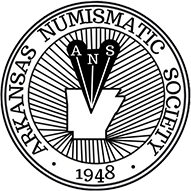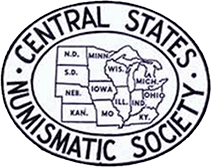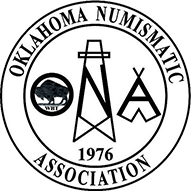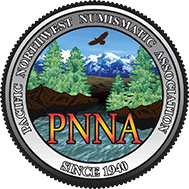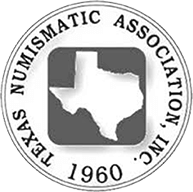As in any industry, numismatists and jewelers have specific terminology to describe the attributes of an item. Our Glossary is a current list of terms used in these industries.
A
Ae – chemical symbol for Bronze
Ag – chemical symbol for Silver
Al – chemical symbol for Aluminum
Alignment – a numsimatic reference
Coin - The traditional strike is such, the obverse and reverse are aligned at a rotation of 180 degrees from each other. In some instances, usually through error a coin or medal series is struck in both coin or medal alignment.
Medal - The traditional strike is such, the obverse and reverse are aligned at a rotation of zero or 360 degrees from each other. In some instances, usually through error a coin or medal series is struck in both coin or medal alignment.
Paper - Pertaining to printing and usually described as a percentage of off-center, either vertical or horizontal.
Aluminum – pure aluminum is a silvery-white metal, lightweight to volume and non-magnetic.
Au – chemical symbol for Gold
Avoirdupois – a system of measuring weight. US standard for weighing--sixteen ounces equal one pound, a.k.a. bathroom scale pound or postal ounce.
B
Billon – an alloy used for producing coins or medals, comprised of base metals and a very small amount of precious metal. Prevalent, but not exclusive to ancient and medieval coinage.
Brass – a hard yellow alloy composed of copper and zinc.
Bronze – an alloy of copper and tin.
C
CN – Copper-nickel amalgam used to produce coins or medals.
Cape – a gem reference. A degree of color, not colorless. See Grading Diamonds.
Chop or Chop Mark – a numismatic reference. Slang synonymous with counter mark to indicate the coin has been through an official counting house. Thus,deemed authentic.
Coin – an object officially designate by national authority as legal tender. Usually made of metal alloys, but not exclusively.
Copper – a soft, reddish metal. Its uses are primarily in industrial applications and as an element in alloys. It is malleable, ductile and highly conductive of heat and electricity.
Counter Mark – a mark struck randomly by hand with a punch to a host coin. Usually to validate or hallmark a coin's authenticity. Thus, allowing it to circulate for commerce in a foreign country; not to be confused with a counter stamp.
Counter Stamp – a mark or device struck with a set of dies on a host coin to indicate a change in valuation.
Counting House – Similar to a bank. Whereby, all foreign monies used for commerce under a government's domain were verified for authenticity and proper weight.
Cu – chemical symbol for Copper
Cuperonickel – an alloy of copper and nickel used in coins and medals.
Cull – a numismatic reference. Very low grade. See Coin Grading - Poor
D
DAV (or DV) – a numismatic reference. Plus an alphanumeric moniker is a reference number derived from an out of print catalog, Davenport Standard Catalog of World Coins. It annotates a specific country's coin type, series and variety.
Demonetized – money no longer accepted as legal tender. Officially withdrawn from circulation and no longer redeemable. Synonymous with Obsolete.
Dentinal – symmetrical teeth-like design.
Devices – a numismatic reference. The specific designs and images found on a coin, not including letters and numerals, unless the letters are incorporated into the design, such as, the word LIBERTY on the headband of a crown or shield.
Dipped – a numismatic reference. Slang for harsh or improperly cleaned coin or medal in a chemical substance.
Dwt – abbreviation for pennyweight (denarius weight). 1/2oth of a troy ounce.
E
Emergency Issues – a numismatic reference. Officially sanctioned under emergency conditions; such as, political or financial destabilization, war, etc. Private or local business' issue legal tender.
F
Fantasy Issues – a numismatic reference. Coins or currency manufactored privately to be sold as a novelty item. It has no value as legal tender.
Field – a numismatic reference. The flat smooth surface of a coin, behind the design and lettering.
Filler – a numismatic reference. Slang for very low grade coin or currency. See Poor - Grading Coins or Grading Currency.
Fine or Fineness – represents the precious metal content of an item and illustraded as a decimal (.000) or as a fraction (000/0=>000).
FL – a gem reference. See Flawless.
Flat Struck – a numismatic reference. A term used to describe a striking anomoly, whereby the die doesn't completely fill during the striking process. Thus, the high points of the devices are not sharp and full, but flat and grainy.
Flawless – a gem reference. A gem clarity grade said to be without imperfections, as observed by an expert with under 15x magnification. It is without imperfections both internally and externally, including no cutting imperfections. See Grading Diamonds.
Foreign Exchange – the exchange of a country's current circulation legal tender for another country's legal tender (i.e. Pesos for Dollars).
Foxing – the soft, rough edges found on paper due to handling and age. It may include, but not limited to, tiny tears, nicks and discoloration.
Fractional Currency – official currency issued in fractional denominations of the primary currency unit (i.e. 25 cents). Usually, a short term solution for a metal shortage.
FX – abreviation. See Foreign Exchange.
G
German Silver – an amalgam of 55-65% copper, 18% nickel, 45-35% zinc. It can appear bright yellow when new, but rapidly fades with use to a dull white with a yellowish cast. German silver is typically used in the production of flatware , holloware and some coinage.
Gold – a soft yellow metal used for producing coins, medals, jewelry and in industry manufactoring. Usually alloyed with other metals to create hardness and color applicable to its purpose. A precious metal.
Guilloche – a geometric design imprinted on paper as a security devise.
H
Hell Money – fantasy currency used in ceremonial burial rites typical of Eastern cultures.
High Relief – a die cutting design technique that gives a coin or medal a deeper depth of field. The field is a deeply curved or the devices built up to enhance the design detail.
Holes – a numismatic reference. Coins or Medals - usually associated with drilling for jewelry purposes. Not to be confused with pits or pitting. Some coins or medals are minted with holes in the center as a design element. Paper - associated with damage. Pins and staples - Tiny symmetrically round holes usually found in pairs. Worm - Irregular asymmetrically round holes. Yes, worms eat paper! WA
I
IF – a gem reference. See Internally Flawless.
Incuse – a coin or medal striking process that renders the design below the surface of the planchet.
Intaglio – a printing method of three dimensional character on paper, from engraved plates or dies.
Internally Flawless – a gem reference. A gem clarity grade said to be without imperfection internally when observed by an expert under 15x magnification. There may be some external imperfections either natural or through cutting. See Grading Diamonds.
J
–
K
Karat, Kt, K – a jewelry reference. A designation of metal purity in gold jewelry. Karat is the inverse of fineness, 14K equals .583 or 58.3% pure gold.
KM – a numismatic reference. Plus an alphanumeric moniker is a reference number derived from the 'The Standard Catalogs of World Coins, Krause Publications'. It annotates a country's coins by type, series and variety.
L
Lead – a soft grey-white metal with a specif gravity close to that of gold. Often conterfeit coins are struck in lead then plated.
Lithography – a method of surface printing on paper with a thin flat layer of ink. Also known as offset printing.
Luster – a numismatic reference. The sheen that develops on the surface of a coin or medal. During the striking process intense pressure and heat cause micro-fine flow lines on the surface of the planchet. When light reflects off these lines, it produces a sheen that can be seen in the fields and under the devices.
M
Medal – private or government issue to honor, award or commemorate a person, acheivement or event. Typically made of metal.
Military Payment Certificate – official paper money issued to military personnel, stationed in foreign countries to be used with local merchants.
MPC – a numismatic reference. See Military Payment Certificate.
N
New – a numismatic reference. A grade to describe paper money that is in uncirculated condition; without flaws.
Ni – chemical symbol for nickel
Nickel – a. a hard white, base metal. Often used as an alloy to give products a measure of hardness. b. Slang for a US 5 cent coin.
Numismatic – the study or act of collecting coins, paper money, and medals.
Numismatist – a person who engages in the study or act of collecting coins, paper money and medals.
O
Obsolete – a numismatic reference. No longer accepted as legal tender. See Demonetized.
Obverse – a numismatic reference. The front or 'heads' of a coin.
Occupation Money – currency issued by the occupying power of a conquered country.
Outmoded – legal tender that is officially withdrawn from circulation and no longer accepted in trade. It is redeemable at the central banks for a finite period of time; at the end of which, it is demonetized.
Overprint – a numismatic reference. An ancillary printing on paper money to indicate a change; including but not limited to cancellation or revaluation.
P
P – a numismatic reference. Along with an alphanumeric moniker is a reference number derived from 'The Standard Catalog of World Paper Money', by Albert Pick. It annotates a country's paper money by type, series and variety.
Palladium – a hard greyish-white metal that is the least dense and has the lowest melting point of the platinum group metals. Used primarily in industial applications and jewelry. Other uses are coins and bullion bars. A precious metal.
Pb – chemical symbol for lead.
Pd – chemical symbol for palladium.
Pennyweight – a unit of measure equal to 1/20th of a troy ounce. See Dwt.
Pique – a gem reference. Internal debris and inclusions visible with the naked eye. See Grading Diamonds.
Pits, (ted), (ting) – a numismatic reference. Asymmetical indentations in the surface of a coin or medal. Atypical of corrosion that has subsequently been removed through cleaning. Non-typical instances are of poorly prepared planchets or dies.
Planchet – a blank metal disk to be stamped as a coin or medal.
Platinum – a very hard, white metal used in making jewelry, coins, bullion bars and in industrial applications. A precious metal.
POW Money – private issued notes and tokens used for barter or exchange exclusively within POW camps. No official legal tender status.
Prison Tokens – private issued tokens used for barter or exchange exclusively within a penal system. Usually made of some form of plastic or Aluminum.
Proof – a numismatic reference. Coins and Medals - a special striking process for collector coins or presentation pieces. Both the die and planchet undergo special polish and striking techniques to create a unique finish. The finish is typically, but not limited to, a mirror-like surface. Paper - the full or partial printing of a note or document . Its purpose is the final check for errors before authorizing a general issuance.
Propaganda Notes – usually a facsimile (copy) of a legal tender note printed with a propaganda message for distribution.
PS – a numismatic reference. Along with an alphanumeric moniker is a reference number derived from 'The Catalog of World Paper Money, Specialized Issues', by Albert Pick. It annotates a country's specialized (i.e. revolutionary issues, etc.) paper money by type, series and variety.
Pt – chemical symbol for platinum.
R
Remainder – a numismatic reference. Notes leftover from a general issue not released into circulation. Usually without signatures, dates and or numbers.
Replacement Notes – a special printing run to replace damaged notes. Typically annotated by a special character, i.e. star, letter or symbol.
Reprint – a numismatic reference. A note printed from the original plates. Usually many years later and for commemorative purposes.
Restrike – a numismatic reference. A coin struck from the original dies. Usually many years later and for commemorative purposes.
Reverse – a numismatic reference. The 'tails' or back of a coin.
S
Short Snorter – slang for a note, signed by soldiers and used as credit at local merchant. Seen typically during WWII although earlier periods do exist.
Siege Notes – localized emergancy money issued during a city siege.
Silver – a brilliant white medium hard metal used in jewelry, coins and in industrial applications. It is malleable, ductile and good conductor of heat. A precious metal.
Slab – a numismatic reference. Slang for an item, third party graded and hermetically sealed in archival plastic.
Sn – chemical symbol for Tin
Speciman – a numismatic reference. Samples of original notes, distributed between banks to familiarize staff with new designs or issues. In many cases the front is printed seperate from the back (uniface).
Split Grade – a numismatic reference. Slang, an older grading term use to indicate a. an item is better than the standard grade, but doesn't quite meet the criteria for the next grade. With the advent of third party grading and numerical designations, this term is not used as frequently. b. one side of a coin is higher grade than the other. This can occur in coins where the bulk of the design detail is on one side, i.e. a high relief, causing it to wear down unevenly.
Stamp Currency – revenue or postage stamps used as emergency money.
Star Notes – see Replacement Notes.
Steel – a hard greyish to white alloy composed of iron, carbon and other trace metal elements.
T
Tin – a soft silvery, white metal. Usually seen in other collectibles. Not often seen in coin production.
Tone, (ing) – a numistmatic reference. The discoloration that forms on metal during oxidation. It can be natural, which is generally harmless or artificial, which can be damage a coin or metal. Toning is a controversial, albeit personal issue, in as much as whether to clean a coin to remove the tone or not.
Troy Weight – a system of weight generally reserved for precious metals.
U
Uncirculated – a numismatic reference. Showing no evidence of circulation.
Uniface – a numismatic reference. Coins - having devices, lettering or numbers only on one side. Paper - printing only on one side.
V
Validation Stamp – a hand-stamp, perferation, adhesive stamp, etc on paper designating official endorsement.
W
Watermark – a hidden design in paper only visible when held at a certain angle to the light. A security device in paper money and monetary instruments.
Whiz, (zed) – a numismatic reference. Slang for a technique used to alter the surface of a coin or medal, in an attempt to mask the grade. The tool is a wire brush.
X
–
Y
–
Z
Zinc – a bluish, white, lusterous metal is brittle. Used primarly in industrial applications due to its high resistance to corrosion. It is also used as an alloy in some forms of coin production.
Zn – chemical symbol for Zinc.





